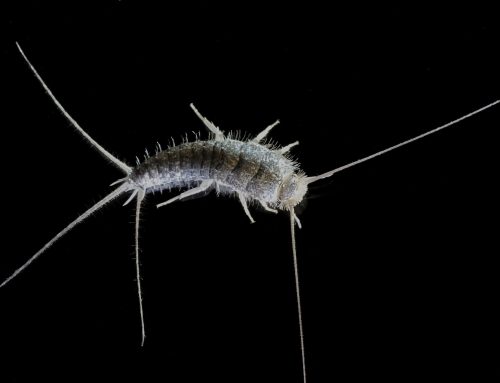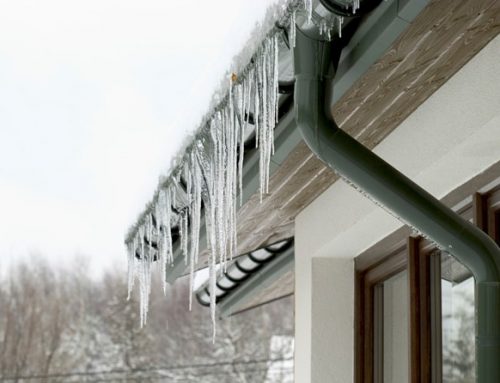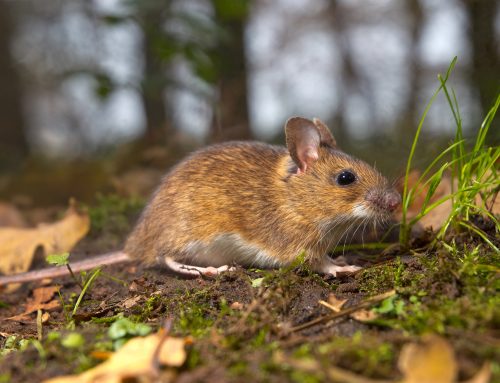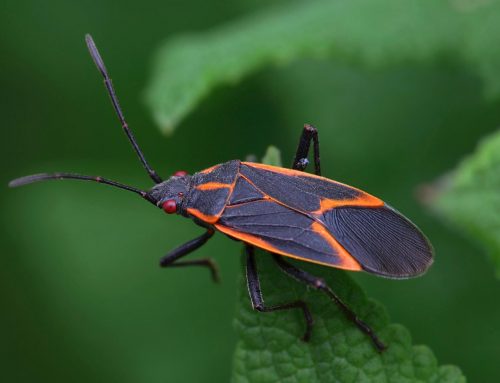In the midst of a hot and humid summer there are pests that thrive off moisture. Most people tend to severely dislike humidity, but some pests love it. This can create an additional problem if you are already facing moisture issues within your home or building. Perimeter pests that enter structures due to changes in outside conditions are more often found already dead due to a lack of moisture. These moisture-loving pests are normally found in dark, damp areas around foundations where they hide in moist soil, mulch and leaf litter, usually feeding on decaying vegetation. They don’t want to be inside, they were just hoping to find better conditions. Unless a site is very damp, most of these invaders don’t have much of a chance of surviving more than a few days. The odds of finding the right conditions for reproduction indoors are slim although possible, depending on the species.
Common Humidity and Moisture-loving pests:
This high-moisture group includes pillbugs, sowbugs, earwigs, millipedes, springtails, field crickets, camel crickets and wood cockroaches.
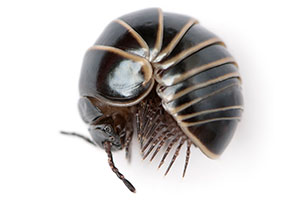 Pillbugs – These common “armored-looking” bugs love to frequent garden sites around buildings and are endearlingly called “rolie polies”. They feed at night on decaying vegetation and often invade damp basements.
Pillbugs – These common “armored-looking” bugs love to frequent garden sites around buildings and are endearlingly called “rolie polies”. They feed at night on decaying vegetation and often invade damp basements.
Sowbugs – Similar in look to the pillbugs or roly polies, the sowbugs like moist and damp environments but often enter indoors in large numbers. However, they are not actually dangerous nor transmit disease. But, they are a nuisance.
 Earwigs – The earwig gets its skin-crawling name from long-standing myths claiming the insect can climb inside a person’s ear and either live there or feed on their brain. While any small insect is capable of climbing in your ear, this myth is unfounded. Earwigs don’t feed on the human brain or lay their eggs in your ear canal. These odd-looking insects have forceps protruding from their abdomen. They like to burrow into topsoil, are nocturnal and can also infiltrate dark and humid areas of your home or building. They can be found around floor drains, bathrooms, or under rugs or furniture.
Earwigs – The earwig gets its skin-crawling name from long-standing myths claiming the insect can climb inside a person’s ear and either live there or feed on their brain. While any small insect is capable of climbing in your ear, this myth is unfounded. Earwigs don’t feed on the human brain or lay their eggs in your ear canal. These odd-looking insects have forceps protruding from their abdomen. They like to burrow into topsoil, are nocturnal and can also infiltrate dark and humid areas of your home or building. They can be found around floor drains, bathrooms, or under rugs or furniture.
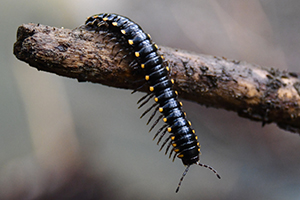 Millipedes – these arthropods have many legs (two on each of their many segments). In general they are not considered poisonous though some species of millipedes can excrete an irritating substance. They like to live in decaying plant matter and eat it as well. Some species are scavengers and predators. Millipedes need moisture to not dry out.
Millipedes – these arthropods have many legs (two on each of their many segments). In general they are not considered poisonous though some species of millipedes can excrete an irritating substance. They like to live in decaying plant matter and eat it as well. Some species are scavengers and predators. Millipedes need moisture to not dry out.
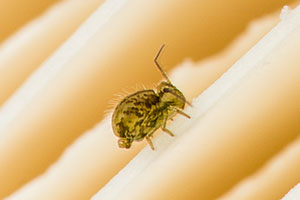 Springtails – These are a group of hexapods that have internal mouth parts. There are about 700 different species. Springtails are small and like to jump. They live in gardens, on compost piles, leaf litter and dead plant material. Springtails are not harmful and do not spread disease but are unwanted in homes and buildings. Springtails will crawl up the sides of houses and enter them through gaps or cracks. Indoors, they quickly die if there is lack of moisture.
Springtails – These are a group of hexapods that have internal mouth parts. There are about 700 different species. Springtails are small and like to jump. They live in gardens, on compost piles, leaf litter and dead plant material. Springtails are not harmful and do not spread disease but are unwanted in homes and buildings. Springtails will crawl up the sides of houses and enter them through gaps or cracks. Indoors, they quickly die if there is lack of moisture.
 Field Crickets – These insects are black or brown and like to dig shallow burrows. They eat plants, animals, clothes and also each other. They are drawn to warm, moist environments within structures.
Field Crickets – These insects are black or brown and like to dig shallow burrows. They eat plants, animals, clothes and also each other. They are drawn to warm, moist environments within structures.
Camel Crickets – The crickets do not chirp, but they do jump. They are also not dangerous to humans but can be a nuisance if they enter the home destroying fabrics and curtains, etc. Humidity attracts the camel crickets into the home or structure.
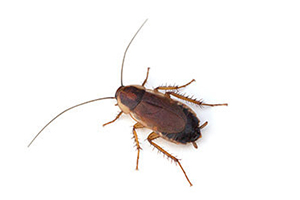 Wood Coackroaches – These cockroaches look a lot like their American relatives because both have and oval shape and chestnut color. Wood cockroaches enjoy moist locations and will be found underneath organic material in nature. This species of roach prefers the outdoors and only ends up becoming an invader by accident.
Wood Coackroaches – These cockroaches look a lot like their American relatives because both have and oval shape and chestnut color. Wood cockroaches enjoy moist locations and will be found underneath organic material in nature. This species of roach prefers the outdoors and only ends up becoming an invader by accident.
Some ideas you can use for prevention
- Test the humidity in your home
- Consider using a dehumidifier
- Fix water leaks throughout your structure.
- Keep your structure and surrounding areas clean.
- Properly ventilate high-risk areas like bathrooms, attics and basements
- Seal crevices where moisture-loving pests may invade your home
- Repair or get rid of and moldy or wet wood
- Keep food items in tight containers
- Replace old weatherstripping
- Dry out puddles outside your structure
- Repair cracks outside your home or building
- Store organic waste away from structure
If you are struggling with getting rid of moisture-loving and humidity-loving pests give us a call at CALL 1-800-572-9797 FOR A FREE ESTIMATE
OR EMAIL US AT: SERVICE@BULLFROGPEST.COM
References:
https://www.wikipedia.org/
https://www.pestworld.org/

